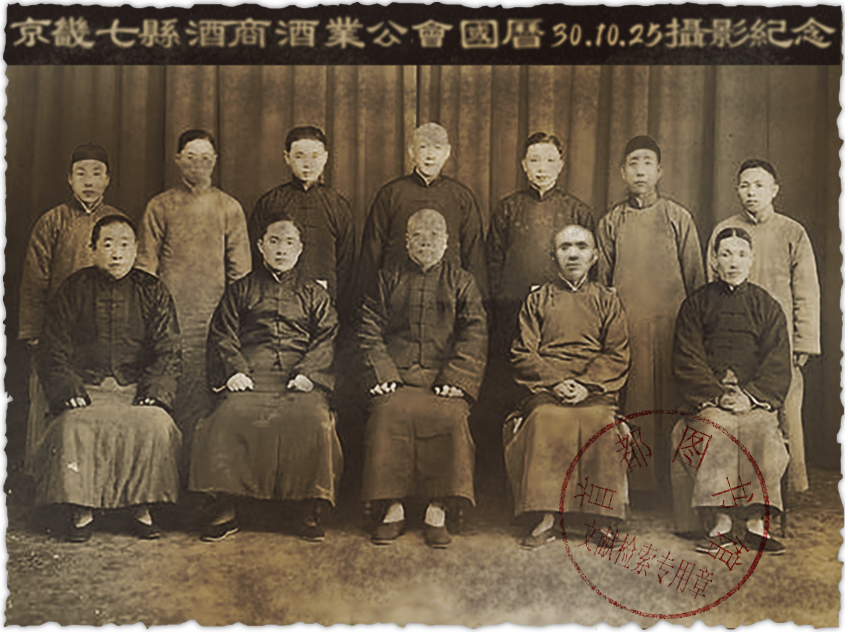Beijing Daxing South Road Soju Culture Museum
In Qing Dynasty, Beijing liquor belonged to Daxing, and Daxing liquor belonged to Longxing.
The traceable history of liquor-making in Beijing started in the Jin Dynasty at the latest, and it has a long history of at least 800 years.

Sleeping for 800 years, waking up to the world again
The inscription "Li Zhiwen, the supervisor of commercial wine and fireworks in Guangyang Town, Youban Hall" was built by Li Zhiwen, the supervisor of commercial wine and fireworks in the fifth year of Jin Mingchang (1194) for his mother, which became a strong evidence that Daxing's wine-making history began in the Jin Dynasty, and it was one of the evidences that documented the origin of South Road Burning, and it was also the only physical object recorded in the history of wine in Beijing. The picture shows a 1:1 replica of the Eight Faces Classic Building, which is stored in the shochu Culture Museum of Beijing South Road. Unearthed in Daxing Anding in 1982.
Source: Beijing Daxing District Cultural Relics Management Office

Small cellar technology of blue brick in Jin Dynasty
On the pit, the technology of small pit fermentation of blue brick has been going on for more than 800 years. The blue brick is made of loess and rice pulp by hand. The cellar pool is built with blue bricks and white ash, and yellow mud and glutinous rice slurry are added for jointing. In the process of fermentation, centennial blue brick can adjust the water content and the cool temperature of wine to promote the growth of microorganisms, which makes the wine richer in trace elements.

Historical origin
According to the Records of Shuntian Prefecture, in the 27th year of Kangxi in Qing Dynasty (1688), four roads, namely East, West, South and North, were set up in the suburbs of Beijing, in charge of 24 counties in Shuntianfu. Nanlu Tongzhi is located in Huangcun, Daxing County, so the pot in Daxing is collectively called "Nanlu Shao" because of its origin.
Source: Beijing Capital Library

At the end of the Qing Dynasty and the beginning of the Republic of China, there were 13 cooking pots in Daxing area, including Longxing, Beiyufeng, Nanyufeng, Yonghe, Dexing Yong, Dadexing, Tongyiquan, Tongquanmao, Wanquansheng, Chunyiquan, Yiyuanyong and Yuxing.

Time: 1920
Jingzhao Bulletin, No.143, 1920
Approval of the petition for tax reduction by wanping burning merchant Longxing and other Daxing burning merchants synonymous with spring (May 24)
Source: Beijing Capital Library

Time: 1934
New Tianjin, 12th and 14th editions, November 28th and 29th, 1934.
A bustling city outside the bustling city.
Panggezhuang South Road Soju sells well, and Jiucheng Branch Office has built-in inspectors to manage the whole town. People in Beiping pay attention to South Road Soju when drinking, and good wine is naturally high in taste.
Source: Beijing Capital Library

Time: 1941
Xinjiang New Newspaper October 25, 1941
Wine merchants from seven counties in Gyeonggi organize wine associations.
[Beijing] Pot-burning wine merchants in seven counties, including Daxing, Wanping, Tongxian Liangxiang, Zhuoxian, Fangshan and Qinghe, set up a wine guild in Beijing for liaison. Yesterday, representatives of the miscellaneous grains guild petitioned the Municipal Office, and were informed of the approval to file a case.
Source: Beijing Capital Library

Time: 1941
In 1941, wanping county established the Liquor Industry Association, and recommended Mr. Wang Yougui as its president. Before that, the South Road Brewing Technology was only passed down by word of mouth, and there was no official written record or authority certification. The historical event that Wang Yougui became the president of the wanping county Liquor Industry Association became a symbol event recognized by the industry, and the South Road Brewing Technology became one of the representatives of the brewing technology in Daxing and even the northern region.
Source: Beijing Capital Library


Time: 1941
"Tongquanmao"-Shaoguo
The owner is He, the chief manager of Dishangying in Caiyu Town, and Zhang Wantong, who was founded in 1920 and whose address is in the west of Er 'nanmenli Road. The production scale is relatively large, with 3000 kg of daily sorghum and nearly 1000 kg of wine, which was closed after liberation.
Source: Beijing Capital Library



The first generation of non-genetic inheritors: Kouwenda and Kouliu. According to historical records, in the eighth year of Tongzhi in Qing Dynasty (1869), Kou's brothers Kouwenda and Kouliu came all the way from Shandong, tasted the well water in panggezhuang, and found it suitable for brewing, so they stopped and set up the "Longxing" cooking pot workshop in the east of Beishilili Road (now the location of panggezhuang Grain Station).

The second generation non-genetic inheritor: Kou Jingchun, son of Kou Wenda (1890-1963). When I was a teenager, I studied wine-making skills with my father, and then inherited the family wine-making industry. In addition to the registration of the trademark "Longxing" (No.23273) in 19 years of the Republic of China, the liquor brewed by Shaoguo won many awards, and semicolons were opened in various parts of Beijing to sell South Road liquor.

The third generation non-genetic inheritor: Wang Yougui. In 1929, he came to Longxing as an apprentice at the age of 16. In 1941, wanping county established the Liquor Industry Association, and Wang Yougui was elected as the president of the Association, and compiled the information on the brewing skills of Longxing.

The fourth generation non-genetic inheritor: Sun Yingcai (1952-). Being a family brewer, he took Wang Yougui as a teacher in 1969 and devoted himself to learning the brewing techniques of Daxing South Road burning liquor. In 1994, he was hired as a brewer in the winery and used the South Road burning process to produce liquor.
